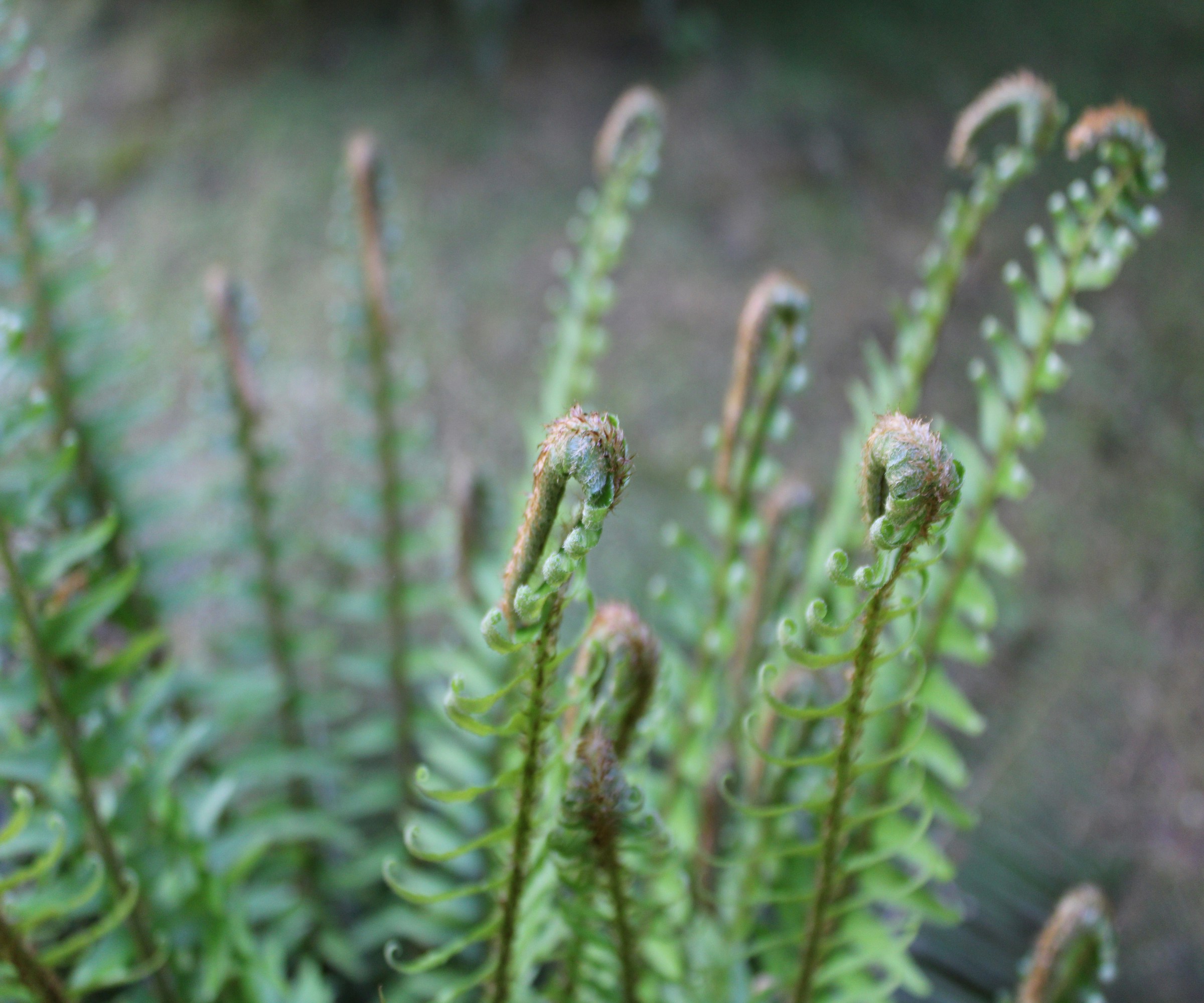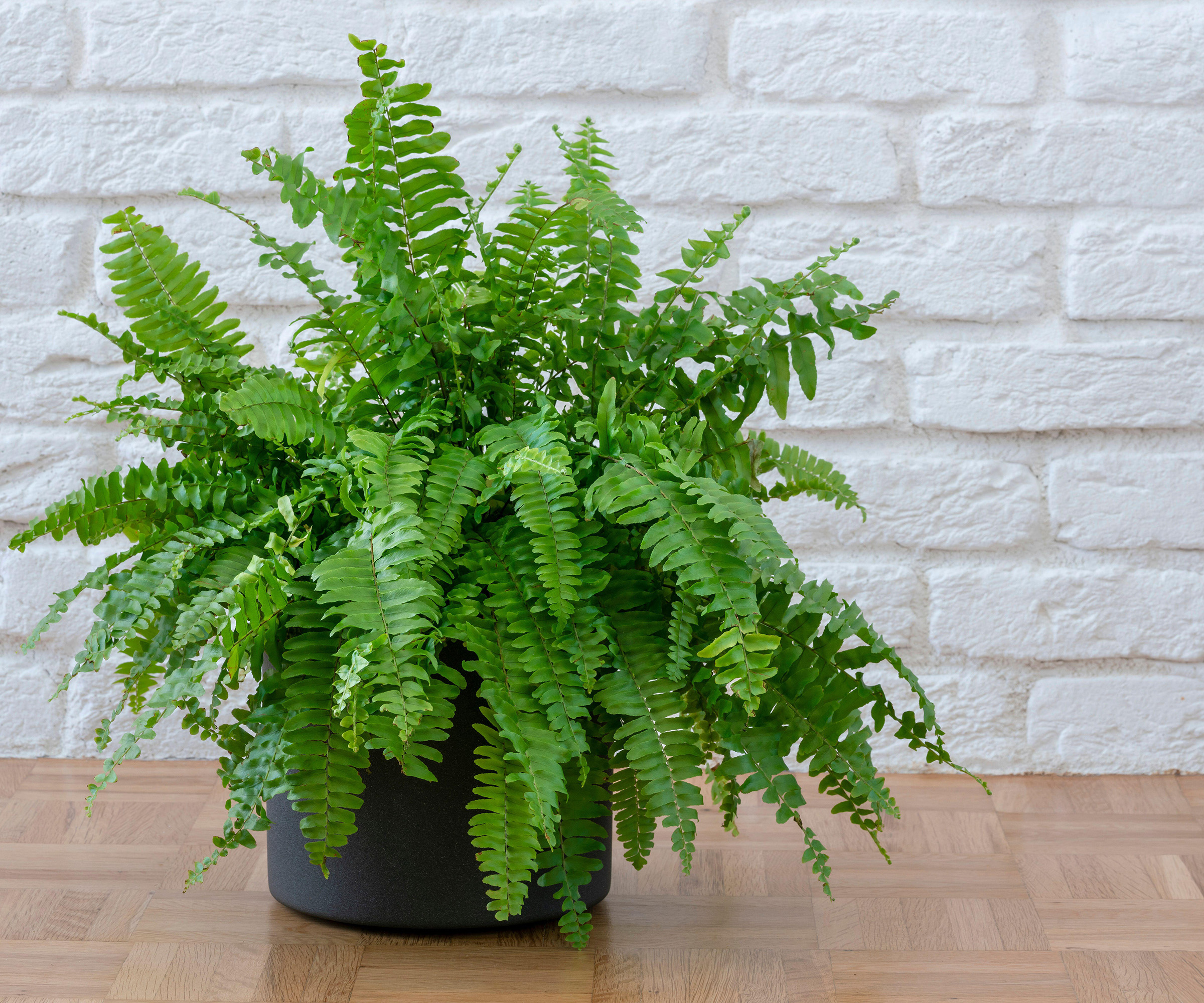
With its lush, vibrant fronds and bushy spread, the sword fern is the perfect foliage floor filler for your yard.
This sculptural plant is an evergreen that adds a tropical touch to your space. It keeps its sword-shaped leaves through winter, with the new fledging fern fronds, known as fiddleheads, uncoiling as the weather gets warmer.
The sword fern is very low maintenance and works as well indoors as a large indoor plant, as it does outside in a container or filling beds under trees as one of the best plants for shade. We look at how to grow a sword fern along with expert tips and tricks to keep it flourishing.
Plant sword ferns in shady spots

‘I’ve been growing sword ferns for over 20 years,’ says landscaper Josh Payne. ‘They are easy to care for and are a favorite for their dramatic shape and deep green. Sword ferns can live 10 to 15 years and provide a graceful, tropical accent for any space.’
The sword fern (Polystichum munitum) is native to western America, growing from Alaska down to Mexico, and is sometimes known as the Western sword fern or California sword fern.
As with growing most ferns, this dense fern flourishes in moist earth and the dappled landscape of a woodland. It is particularly well suited to the humid regions of the Pacific Northwest, sheltered by tall trees, or in the shadow of garden structures.
When planting a sword fern, leave plenty of space for expansion – as it grows it resembles a shuttlecock with its leaves spreading outward at the top and reaching up to four feet across. After you've dug your hole, add compost or other organic matter to create a rich soil.
The fact that it grows best out of direct sunlight – only needing two to four hours of bright sun every day – means it is useful for filling in the gloomier patches of the yard where other plants struggle to survive, bringing a splash of green to those hidden corners.
You can find Western sword fern plants at Walmart
Sword fern care requirements

The sword fern’s hardiness, low-maintenance nature and versatility make it the perfect choice for beginner gardeners or those who don’t have hours to spend tending their plants and nurturing temperamental growers.
‘Caring for them is relatively simple,’ says online nursery owner Dennis Sons. ‘They flourish both indoors and outdoors, adjusting to different environments.
‘Indoors they prefer indirect light and a humid atmosphere, which can be accomplished through frequent misting or by placing them near a humidifier.
‘Outside they are best suited for USDA hardiness zones 3 to 8, as they can withstand cold winters and reemerge in the spring. However, they may struggle in zones nine and above, where extreme heat or low humidity can affect their appearance.
‘Proper watering is crucial. They prefer consistently moist soil, so watering them regularly without waterlogging is essential. A good rule of thumb is to keep the soil evenly moist but not soggy.’
During winter, the abundance of leaves protects the center crown where the new growth will emerge.
The old foliage can be trimmed back in late winter to early spring to reveal the tight curls of the new fiddleheads. ‘I fertilize sword ferns during the growing season and cut away any dead or damaged fronds,’ recommends Josh Payne.
Fish fertilizer, such as this Alaska liquid all-purpose food from Lowe’s, is a low cost source of nutrition for ferns, strengthening up the roots. It is also safe around children and pets.
Sword ferns are good for creating layers of natural color and vibrancy, says Loren Taylor, a gardening expert and fountain designer.
‘They make great companions planted under trees or along borders with other shade-loving plants like hostas, coral bells, and azaleas.’
Growing sword fern indoors

And as any indoor fern, a sword fern can make a real statement, filling a corner or surface with its thick growth of featherlike fronds.
‘Because they love humidity, they're perfect for bathrooms, shower rooms and other humid spots in your home,’ says Loren. ‘Just be sure to provide them with bright but indirect light.’
To maintain a humid atmosphere outside such steamy spaces, mist it frequently with a water sprayer, such as this glass mister from VKSG at Amazon, or place near a humidifier. If a sword fern become too dry, the leaves will droop and become brittle. Lift the pot – if it feels lightweight, it means the soil has lost its moisture, compromising the health of your fern. However, if the leaves are soft and yellowing, that means your plant has been overwatered.
If it has outgrown its container, it could become pot bound. Replant it in a bigger pot with more space for the roots to spread and for the soil to stay aerated.
If you enjoy a naturalistic approach to planting, ferns are a super simple, versatile and low-effort choice. With ferns, it's possible to create either a woodland or a tropical look depending on where you live and style of yard.
If indoor ferns are more your thing, you might be interested to discover the best way to grow an asparagus fern, to add feathery foliage to your home.







